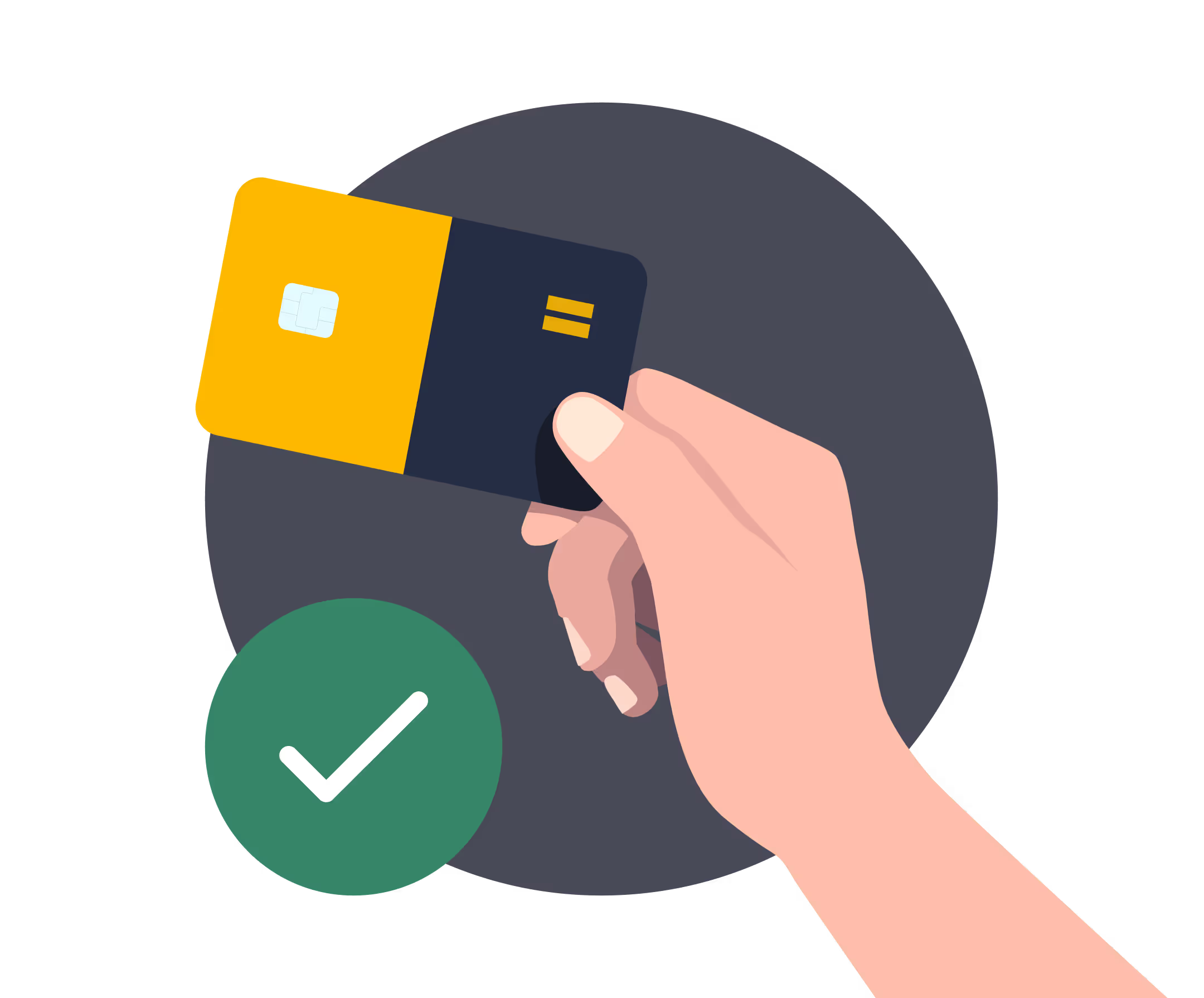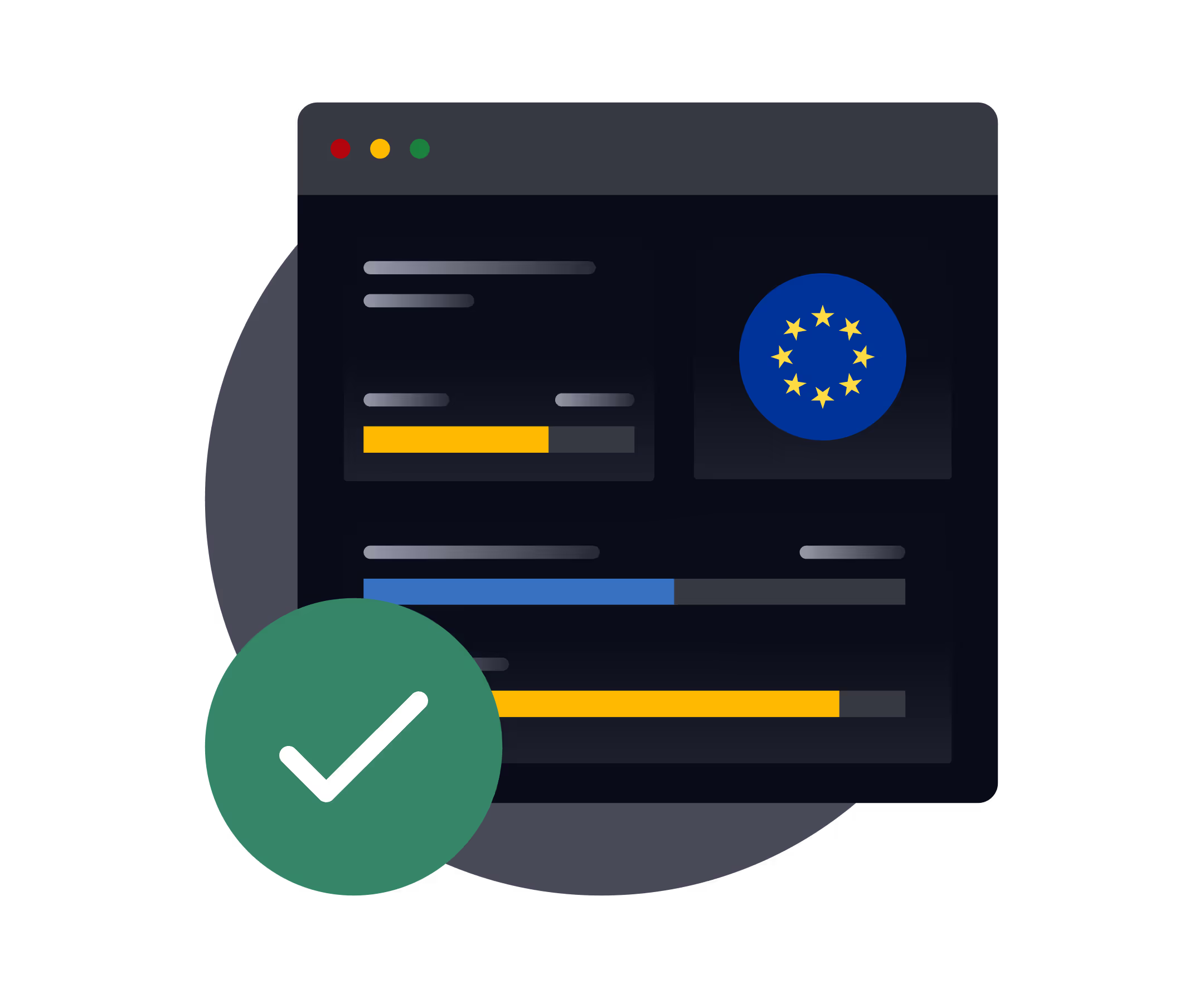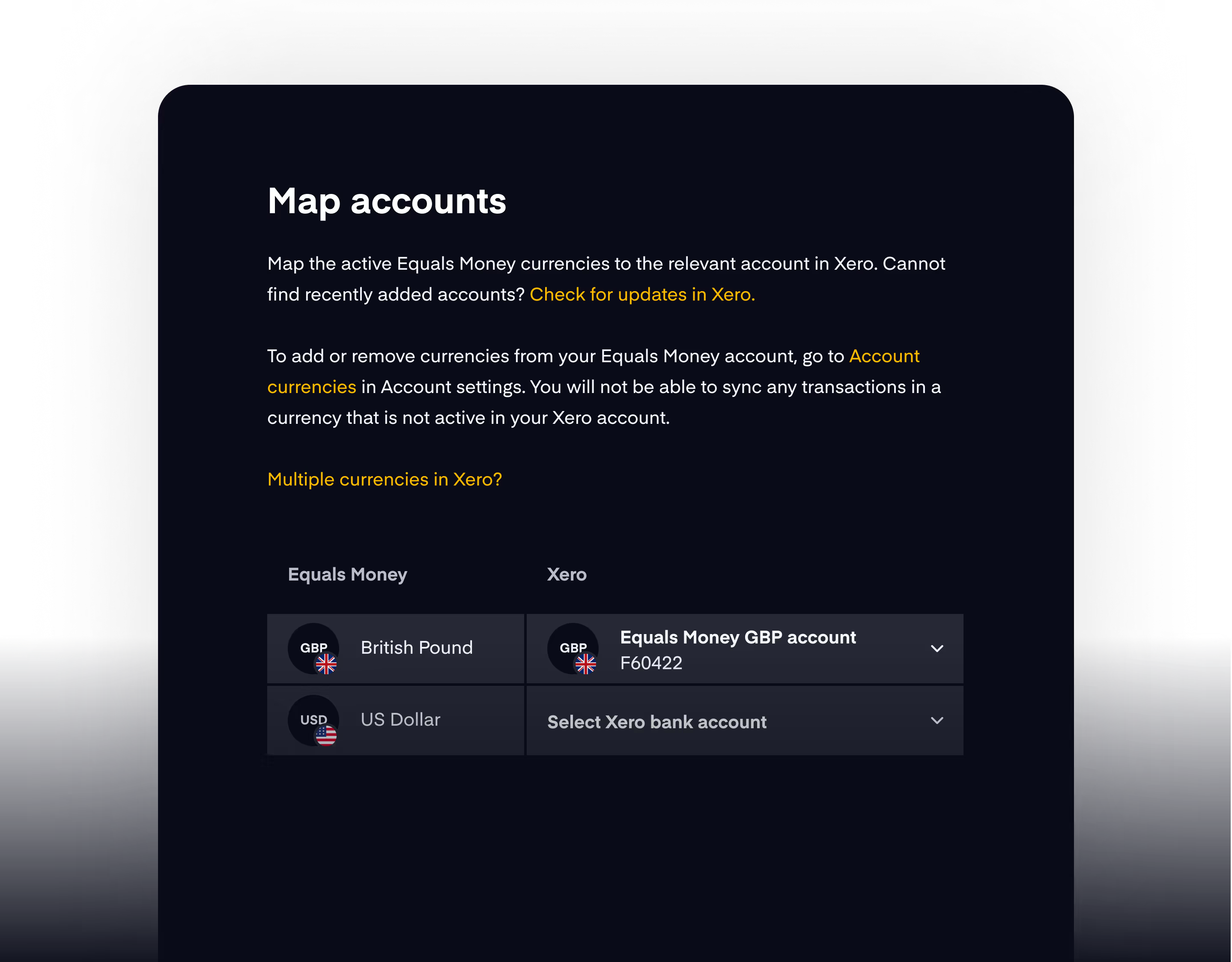EUR
The euro (EUR) is one of the world’s most influential and widely traded currencies, serving as the official currency of the eurozone—a monetary union of 20 European Union countries.
Launched in 1999, it has grown to become the second most traded currency globally after USD and is also the second most held international reserve currency by central banks worldwide.
As a popular currency, the euro plays a critical role in international trade, investment, and foreign currency markets. Its stability, liquidity, and integration into the global financial system make it a key benchmark in the forex market and a vital reference for global pricing, economic indicators, and cross-border commerce.
Yes, you can make purchases in EUR using an Equals Money card.
Equals Money cards support 21 global currencies (including EUR), allowing you to make local currency purchases in the eurozone without currency conversion. However, your card balance must include the required amount in EUR.

.png)
Yes, you can receive payments in EUR using an Equals Money account.
Equals Money accounts are equipped with a multi-currency IBAN, allowing you to receive payments and manage funds in 38 global currencies (including EUR), without the need for currency conversion.

Yes, you can make payments in EUR using an Equals Money account.
Equals Money allows outbound wire payments in 61 global currencies (including EUR). Read more on how to make an online payment here.
If you're an existing payments customer and do not have access to an online account, please speak to your account manager or get in touch with our team.

Yes, you can make bulk payments in EUR using an Equals Money account.
Equals Money allows bulk (batch) payments in 35 global currencies (including EUR).

EUR: A brief history
The euro was conceived in the aftermath of decades-long efforts to unify European countries economically and politically following the devastation of World War II. The idea of a single European currency was formally proposed in the Maastricht Treaty of 1992, which laid the foundation for the European Economic and Monetary Union (EMU).
The euro was officially introduced on 1 January, 1999 in non-physical form, used as an electronic currency for banking and financial transactions. However, It wasn’t until 1 January, 2002 that euro banknotes and coins entered public circulation, replacing national currencies such as the German mark, French franc, and Italian lira.
Initially adopted by 11 EU countries, the euro has expanded over the years and is now the official currency of 20 of the 27 European Union member states. These countries form the eurozone, a major economic bloc with a combined Gross Domestic Product (GDP) rivalling that of the United States.
However, there are countries and nations that utilise the euro as their national currency due to specific monetary agreements with the EU, but they are not considered part of the eurozone, due to not being EU Member States. These countries include Andorra, Monaco, San Marino, and the Vatican City.
As the second most widely held international reserve currency in the world after the US dollar, the euro has become a cornerstone of international trade and finance, contributing significantly to European economic stability and integration.
Currency symbol
The euro’s currency symbol (€) was designed by the European Commission to represent both a shared European identity and financial stability.
The currency sign is derived from the Greek letter epsilon (Є), honouring the historical roots of European civilisation, and also evokes the first letter of "Europe". The two parallel horizontal lines cutting across the symbol stand for the currency’s aim of stability within the European monetary system.
Introduced in 1997 after a public design competition, the currency sign of the euro symbol is now widely recognised around the world, appearing on cash, financial statements, ATMs, and foreign currency exchange boards.
ISO code
The ISO currency code for the euro is EUR.
This standardised three-letter currency code is essential for currency exchange, international transfers, and financial reporting. The code is structured by taking the first two letters from the name of the issuing entity, European Union (EU), and appending the initial of the currency itself, R for "euro".
The EUR code is used globally by banks, forex traders, businesses, and governments when referencing the euro in transactions, financial software, and accounting systems. It ensures clarity and consistency in identifying the currency, especially in multilingual and multi-currency environments.
Denominations
Euro banknotes are issued in seven denominations: €5, €10, €20, €50, €100, €200, and €500.
Each note features distinct colours and sizes to aid usability and includes advanced security features such as watermarks, holograms, and microprinting to prevent counterfeiting.
The €500 note, although still legal tender, has been largely withdrawn from circulation due to concerns over its use in money laundering and illicit transactions.
Currency subunit
The cent is the official subunit of the euro, with 100 cents equalling one euro, following the decimal system common to many modern currencies.
Euro coins are available in 1, 2, 5, 10, 20, and 50 cent denominations. Cents are widely used in cash transactions, particularly for low-value purchases.
The design of these coins includes a common European side (featuring a map of Europe or the EU) and a national side, which varies by issuing eurozone country but remains legal tender throughout the eurozone. Despite these national designs, all euro coins are valid in every eurozone country, enhancing cross-border usability
While cash usage is declining in some countries due to digital payments, cents remain essential for vending machines, public transport, and smaller retail purchases.
Official name and common nicknames
The official name of the currency is simply euro, with no plural form used in English, regardless of quantity (e.g., “20 euro”).
In everyday speech across Europe, the currency is often referred to using localised versions of the word, such as “euro” in Spanish, “euro” or “oyro” in German dialects, or “evro” in Eastern European languages like Bulgarian or Slovenian.
In financial and trading circles, the euro may be casually called the “single currency”, "base currency", or “EUR”.
Although not as slang-heavy as other currencies, some traders occasionally refer to the EUR/USD pair as the “fiber”, drawing a parallel to the “cable” nickname for GBP/USD, though this usage is niche.
Central bank
The European Central Bank (ECB) is the euro’s issuing authority and the central monetary institution for the eurozone.
Established in 1998, the ECB is based in Frankfurt, Germany and operates independently from political influence. It is responsible for setting interest rates, monetary policy, maintaining price stability, and supporting economic growth across the euro area.
In collaboration with the national central banks of the eurozone countries, the ECB also supervises commercial banks, oversees payment systems, and implements policies aimed at maintaining the integrity of the euro. The ECB plays a vital role in ensuring cohesion across diverse economies using a single currency, balancing inflation targets with broader fiscal policies.
Read more about the European Central Bank's interest rate decisions here - When is the next ECB interest rate decision?
Common EUR forex trading pairs
The euro (EUR) is the second most traded currency in the global forex market, involved in approximately 30–35% of all daily forex transactions.
In forex trading, the euro is frequently paired with other major currencies, either as the base currency or the quote currency, depending on market convention.
Major EUR forex pairs
These pairs combine the euro with other major global currencies, and are among the most liquid and actively traded in the world:
- EUR/USD – Euro / US dollar (the most traded forex pair globally)
- EUR/GBP – Euro / British pound
- EUR/JPY – Euro / Japanese yen
- EUR/CHF – Euro / Swiss franc
- EUR/AUD – Euro / Australian dollar
- EUR/CAD – Euro / Canadian dollar
- EUR/NZD – Euro / New Zealand dollar
These pairs are known for their high trading volumes, tight bid-ask spreads, and constant market activity, making them attractive to both institutional investors and retail traders.
EURUSD alone serves as a barometer for broader economic sentiment, influenced by interest rate decisions from the European Central Bank (ECB) and the US Federal Reserve.
EUR commodity forex pairs
The euro is also actively traded against currencies of commodity-exporting or emerging market nations, particularly in cross-currency pairs that do not involve the US dollar:
- EUR/NOK – Euro / Norwegian krone
- EUR/SEK – Euro / Swedish krona
- EUR/TRY – Euro / Turkish lira
- EUR/ZAR – Euro / South African rand
- EUR/PLN – Euro / Polish zloty
These pairs can be more volatile and are often driven by regional factors such as energy prices, geopolitical events, or economic data from Europe and the partner country.
Because of the euro’s central position in the global economy, fluctuations in EUR pairs often reflect changes in European monetary policy, trade dynamics, and investor sentiment across both developed and emerging markets.
















